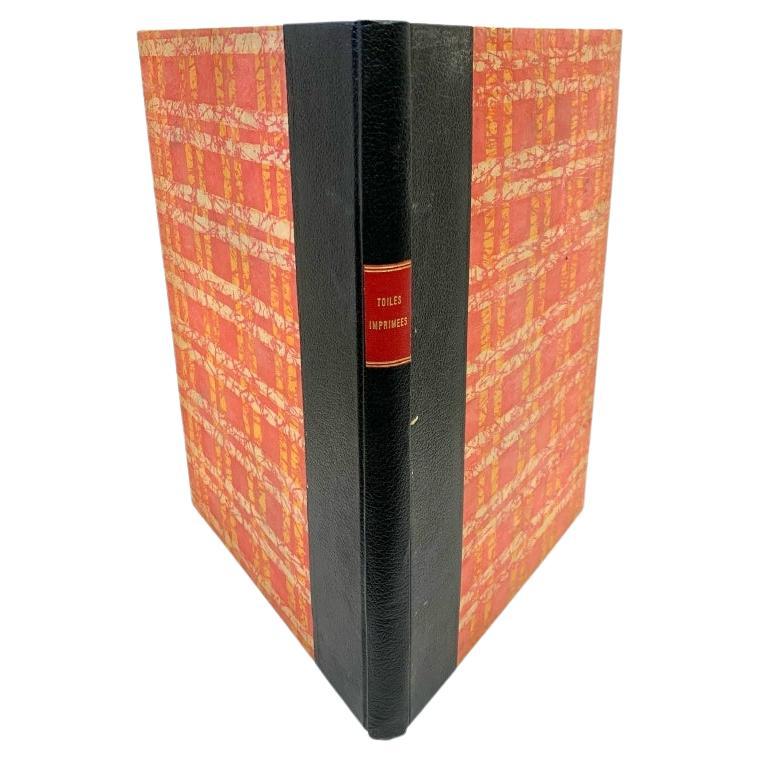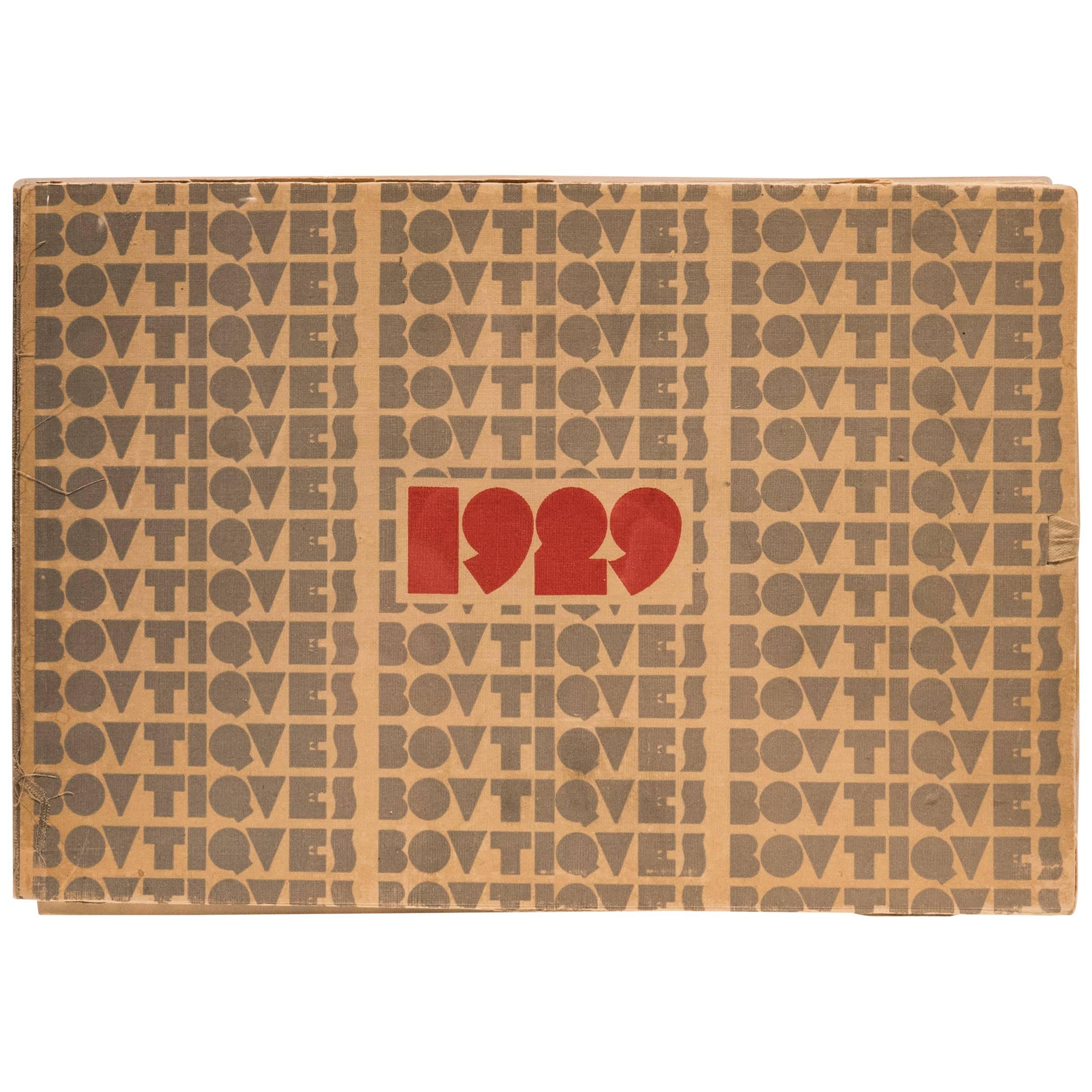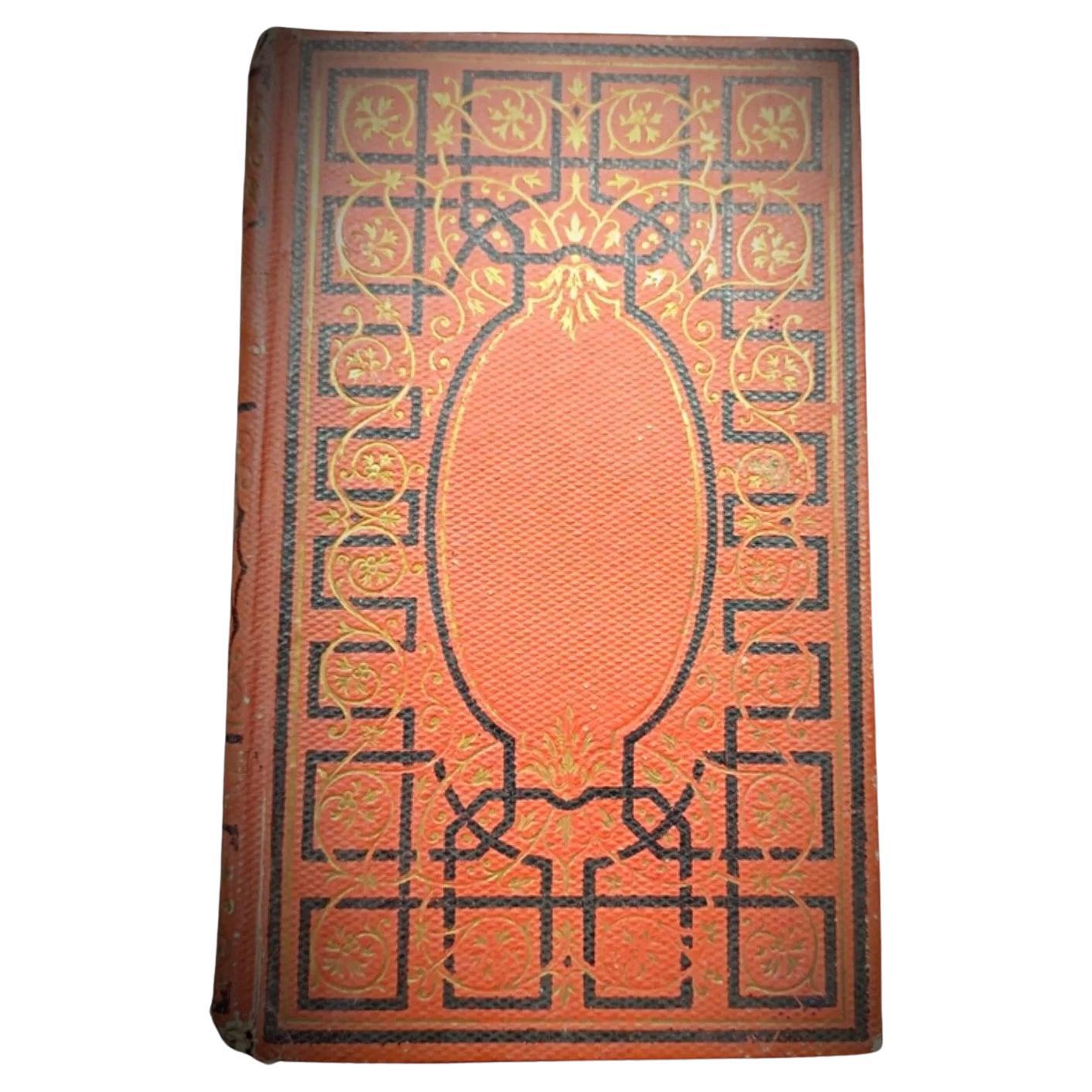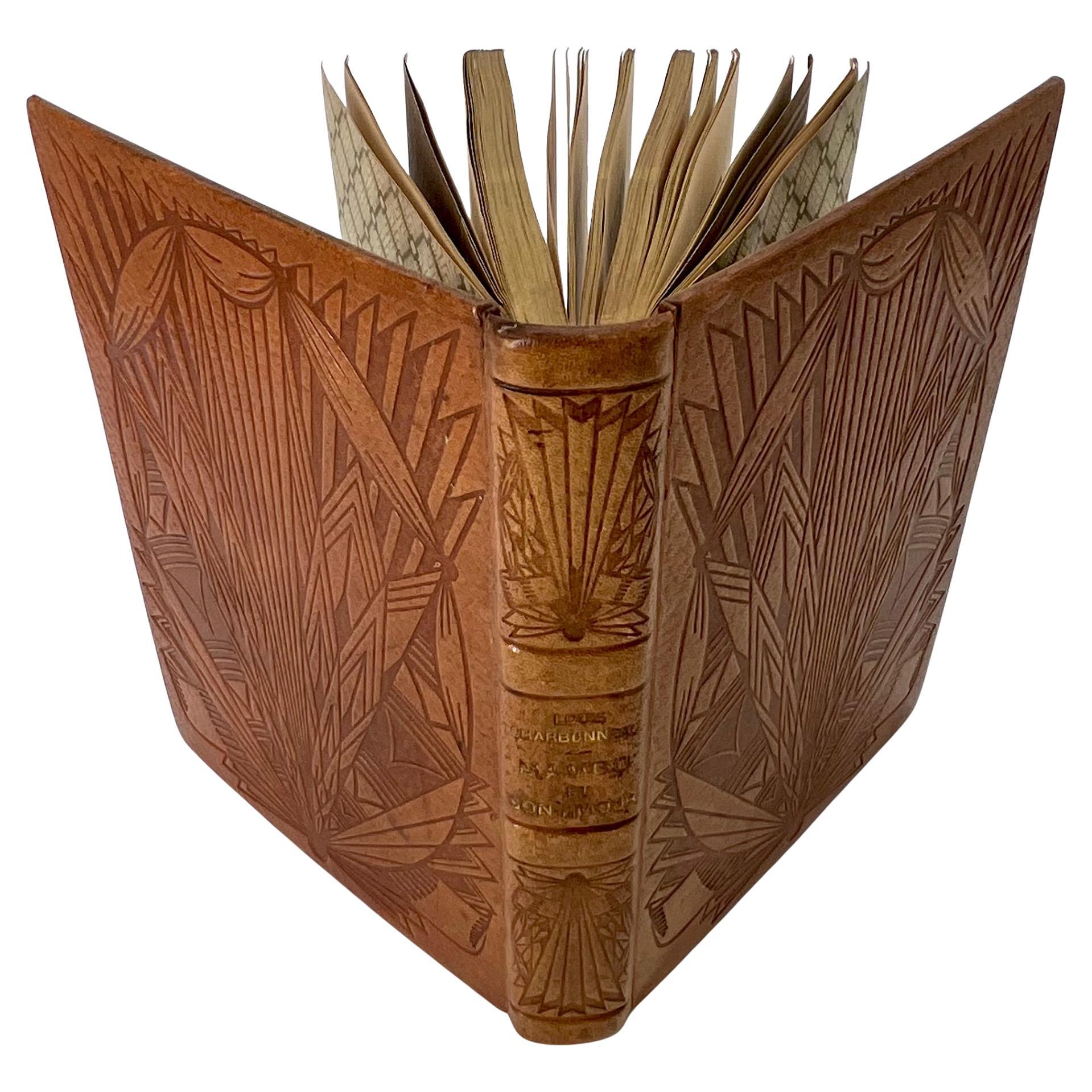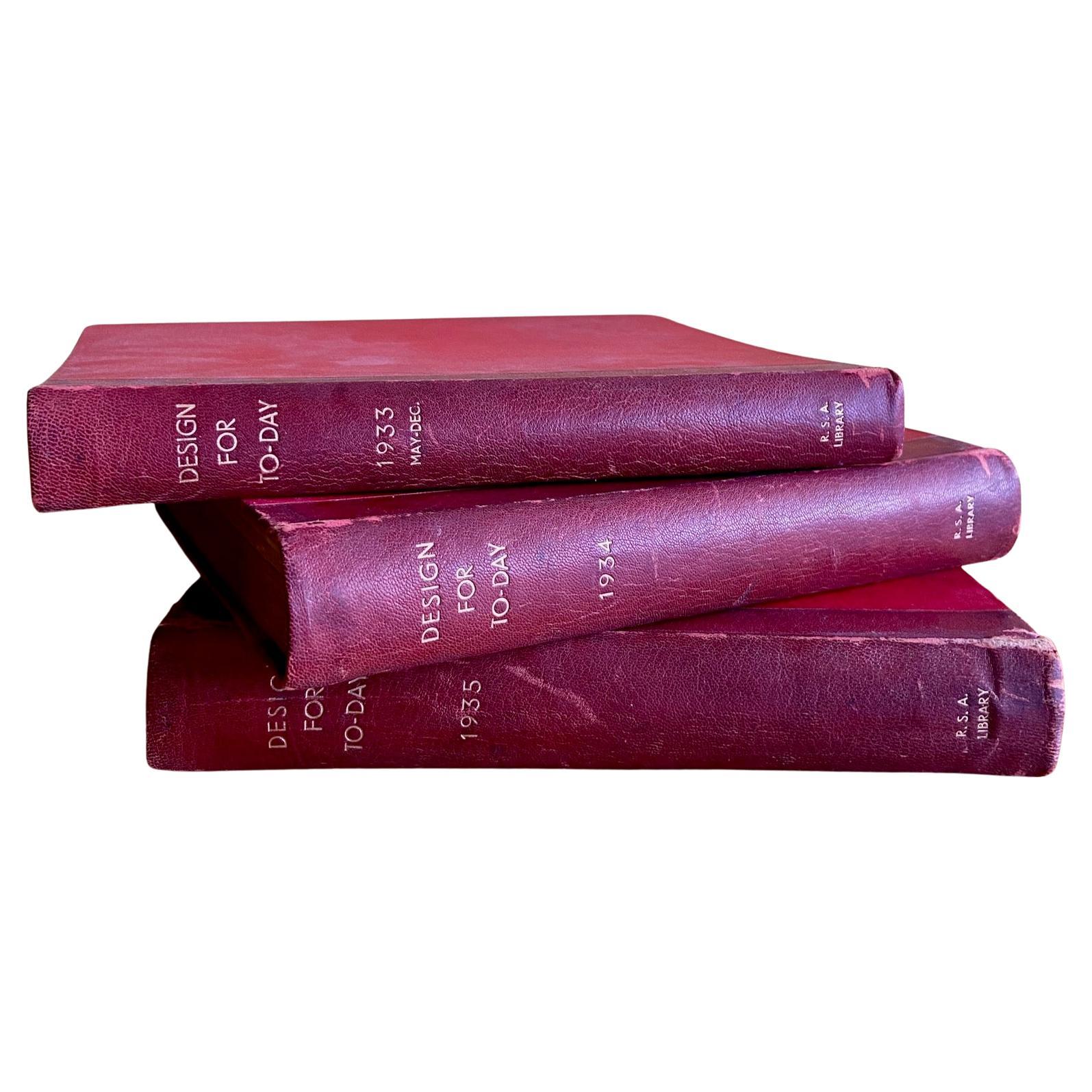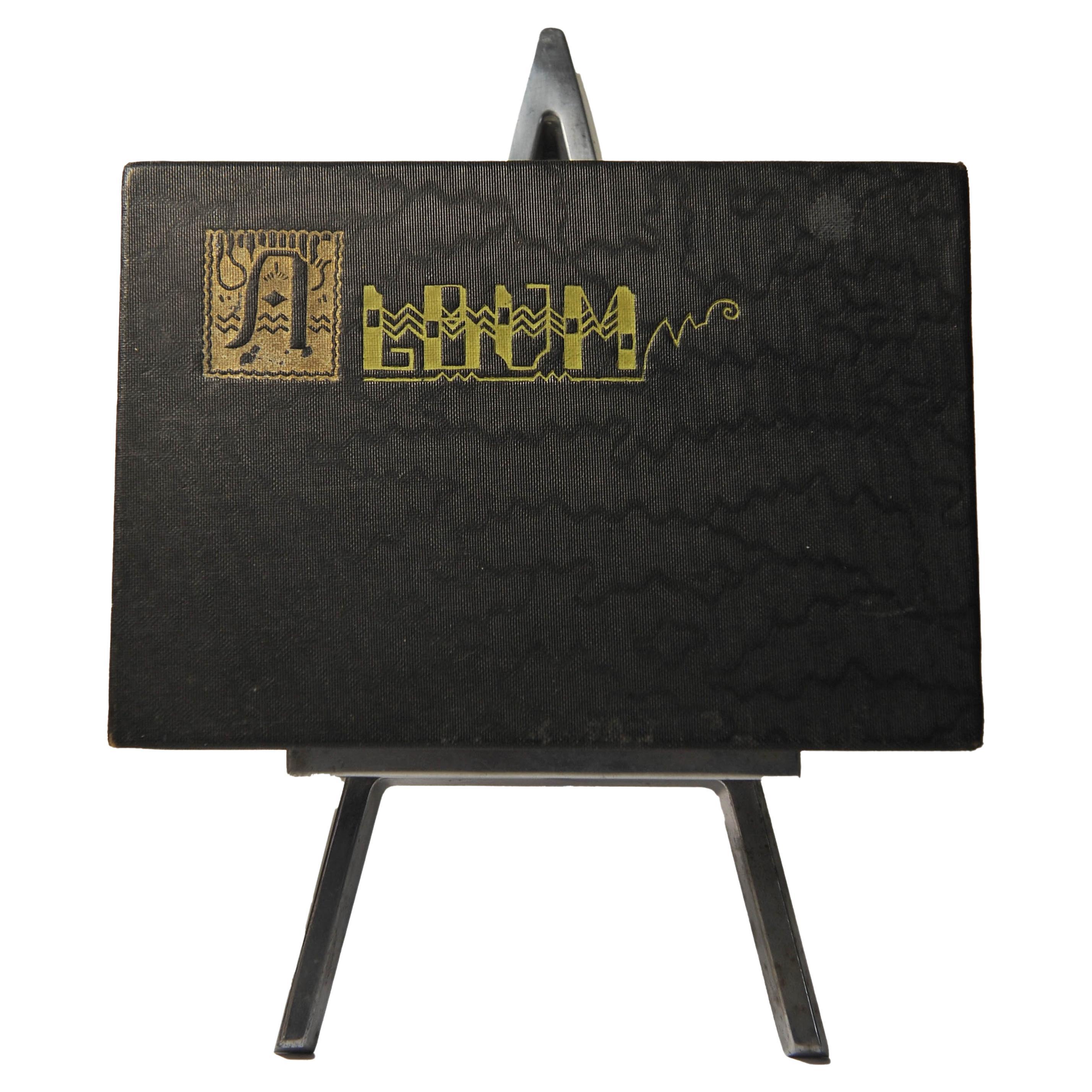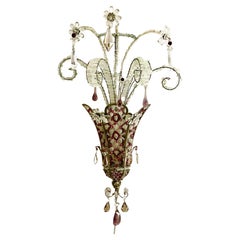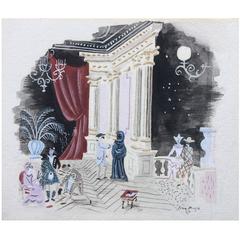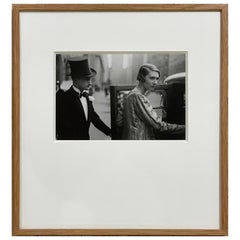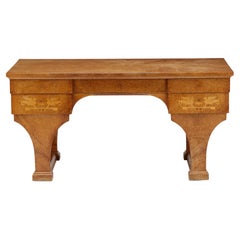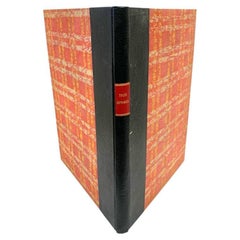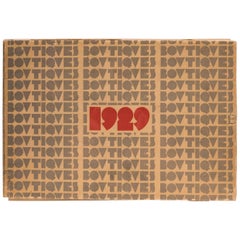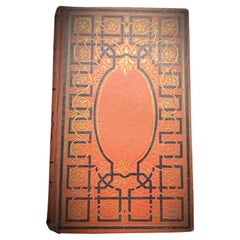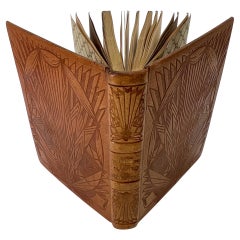Items Similar to Paul Poiret's Two Editions de Luxe
Want more images or videos?
Request additional images or videos from the seller
1 of 14
Paul Poiret's Two Editions de Luxe
$20,000per set
£15,049.57per set
€17,398.45per set
CA$28,240.58per set
A$30,621.05per set
CHF 16,250.23per set
MX$377,137.21per set
NOK 201,411.38per set
SEK 190,086.04per set
DKK 129,866.30per set
About the Item
Paul Poiret's career began in the Belle Epoque, when fashion was defined by imprisoning corsets, restrictive tailoring, and ethereal colors. Opening his own fashion house in 1904, he banned the corset, emphasized draping, and introduced strident colors. No less an impresario than a designer, Poiret hit the road with a bevy of models to promote his collections worldwide. He also designed theatrical costumes and stage sets, created the first designer perfumes, launched an interior design studio, threw unbelievably extravagant parties, and opened a contemporary art gallery and nightclub in the Avenue d’Antin compound where he worked and lived. In other words, he was the first designer to create a lifestyle brand. His initial stab at marketing and branding was the 1908 publication of one of these books, 'Les Robes de Paul Poiret,' in a limited edition of two-hundred-and-fifty. Illustrated by Paul Iribe, it had ten hand-colored pochoir (stenciled) plates and no text. Copies were sold in bookstores, but his target audience was, he wrote in his autobiography, “the elite of Europe,” who were sent complimentary copies. His body-clinging clothes shown on sloe-eyed beauties, whose preoccupations appear to be anything but God, family, and country, prompted the French novelist Octave Mirbeau to accuse Poiret of sending “obscenities” to his wife, and Queen Alexandra to return her copy with a letter stating “the Queen of England does not receive advertising catalogs.” A succès de scandale, the book has been sought after by bibliophiles, collectors, and fashionistas ever since.
The cover has a decorative oval enframing the title, and a smaller subtitle, 'Racontées par Paul Iribe' ('As Told by…') suited to a storybook. And indeed, each illustration seems to tell a story. The women and their clothes were rendered in color, but their luxurious domestic settings are black-and-white. Two years before, Iribe had captured the attention of sophisticated Parisians with his illustrations and articles for 'Le Témoin,' a satirical political weekly that he had founded.
No less egotistical, fiery-tempered, or entrepreneurial than Poiret himself, Iribe went on to become famous too. He muscled in on his former patron’s territory by designing dresses, theatrical costumes and stage sets, interiors (occasionally collaborating with Poiret), and one-off furniture. In 1919 he set off for Hollywood on signing a lucrative contract to design costumes and sets for the films of Cecil B. DeMille. The late 1920s found him back in Paris where he relaunched Le Témoin, bankrolled by Coco Channel, his latest romantic conquest, for whom he designed a line of precious jewelry (in 1935 he died in her arms after a strenuous tennis match). Of particular interest to us was his interest in the decorative arts. In the plates he depicts Louis XVI furniture, and an ebony table of his own design, and a George Romney portrait, and a print by Sir Edward Burne-Jones.
In 1911, three years after 'Les Robes,' Poiret released a second book with twelve pochoir plates in an edition of one thousand, 'Les Choses de Paul Poiret Vues par Georges Lepape' ('The Things of Paul Poiret Seen by…'). Unlike the competitive Iribe, Lepape was an easygoing man who hung out with Georges Braque and Marie Laurencin at the Moulin de la Galette, the bohemian dance hall immortalized by Renoir and Toulouse-Lautrec. Poiret allowed his name to appear on the cover in the same size as his own, along with a tasseled belt that Poiret sent his wife as a gift. Inside is an orgy of color that appears in the backgrounds as well as the clothes, which are worn with orientalist turbans. The book’s success brought Lepape many commissions, including illustrations for the Gazette du Bon-Ton, perhaps the most beautiful fashion magazine of all time, which, in turn, brought him to the attention of Condé Nast in New York, who would buy the Gazette, and put Lepape on contract for Vogue.
One again, of particular interest to us are the luxurious settings. In 1911, the year 'Les Choses' appeared, Poiret launched Parfums Rosine, a perfume line, and the Atelier Martine, an interior design studio, which were named for his daughters. Martine also produced furniture, fabrics, cushions, and wallpapers, that were sold in stand-alone boutiques in Paris and London, and high-end department stores in Berlin and New York. One plate in our book shows a supine seductress in a cushioned opium den that looks very much like a Martine interior.
Even in the 1920s, a decade known in France as Les Années Folles (The Crazy Years), Poiret’s unbridled spending and over expansion was beyond the beyond. It won him the sobriquet Poiret le Magnifique. It also put him in a precarious financial position. Not surprisingly, following the 1929 stock market crash, his empire was among the first to crumble. When it did, he retreated to a country house that he couldn't afford to complete, took up painting, cooked sumptuous meals for friends, and wrote a spellbinding autobiography. Force of circumstance, however, left him no less magnificent. Standards diminished in the years that have followed, and many other designers have attempted to emulate his creative reach, yet none have equaled, or even approached, Poiret’s accomplishments.
- Creator:Paul Poiret (Designer)
- Dimensions:Height: 12 in (30.48 cm)Width: 13 in (33.02 cm)Depth: 0.5 in (1.27 cm)
- Sold As:Set of 2
- Style:Art Deco (Of the Period)
- Materials and Techniques:
- Place of Origin:
- Period:1900-1909
- Date of Manufacture:1908 and 1911
- Condition:Wear consistent with age and use. Some foxing, and bleeding of colors through the paper.
- Seller Location:New York, NY
- Reference Number:1stDibs: LU1061426249612
About the Seller
5.0
Recognized Seller
These prestigious sellers are industry leaders and represent the highest echelon for item quality and design.
Established in 1994
1stDibs seller since 2014
20 sales on 1stDibs
Typical response time: 12 hours
- ShippingRetrieving quote...Shipping from: New York, NY
- Return Policy
Authenticity Guarantee
In the unlikely event there’s an issue with an item’s authenticity, contact us within 1 year for a full refund. DetailsMoney-Back Guarantee
If your item is not as described, is damaged in transit, or does not arrive, contact us within 7 days for a full refund. Details24-Hour Cancellation
You have a 24-hour grace period in which to reconsider your purchase, with no questions asked.Vetted Professional Sellers
Our world-class sellers must adhere to strict standards for service and quality, maintaining the integrity of our listings.Price-Match Guarantee
If you find that a seller listed the same item for a lower price elsewhere, we’ll match it.Trusted Global Delivery
Our best-in-class carrier network provides specialized shipping options worldwide, including custom delivery.More From This Seller
View AllPair of 1920s French Sconces
Located in New York, NY
Madcap, whimsical, spritely, over-the-top -- these are just a few of the adjectives that spring to mind in describing this stylish pair of 1920s French sconces. Their steel frames a...
Category
Vintage 1920s French Art Deco Wall Lights and Sconces
Materials
Steel
$20,000 / item
Small Painting by Jean Hugo from 1927
By Jean Hugo
Located in New York, NY
Great grandson of the famous writer Victor Hugo, the painter Jean Hugo (1894-1984) was in the thick of the Paris art scene between the wars. A member of the avant garde, he was a friend of Picasso, Cocteau and Colette and was associated with the Neo Romantics. His small gouaches on paper were avidly collected by Dr. Albert Barnes, and can be seen today in the Barnes Collection in Philadelphia. Hugo's most desirable work -- landscapes, interior scenes, set designs -- date from the mid 1920s to the late 1930s. This whimsical painting, signed and dated 1927, is set in a curtained, classical interior furnished with Victorian lighting fixtures...
Category
Vintage 1920s French Romantic Paintings
Materials
Gouache
1934 Remie Lohse Photograph for Vogue
By Remie Lohse
Located in New York, NY
Remie Lohse was born in Puerto Rico, studied painting in Denmark, and settled in New York in 1928, where he became a professional photographer. In the 1930s he was a freelancer who specialized in advertising and magazine features, and shot covers for Vogue. If he often focused on the high life, seen in this couple stepping out on the town, he also shot humble subjects. He was more interested in his art than a particular milieu, and many of his photographs are little masterpieces. His contemporary Gilbert Seldes, the noted Vanity Fair media critic and “public intellectual” (not to mention father of actress Marian Seldes), featured Lohse in his 1934 book 'This is New York, The First Modern Photographic Book of New York.' In 1939 Lohse came out with his own book titled 'The Miniature Camera in Professional Hands.'
Our photograph was one of three shot by Lohse for a 1934 Vogue article titled “High Spots and Low Music." If the photograph (image size 4 1/4" x 6") show a couple making the nocturnal rounds of Manhattan restaurants, bars, and jazz clubs, the story itself also covers the daytime meeting places of the ladies who lunch. The twist is that Lohse’s model was the author herself, Elena Mumm Thornton, and her husband James Worth...
Category
Vintage 1930s American Art Deco Photography
Materials
Paper
Art Deco Desk by Ernest Boiceau
By Ernest Boiceau
Located in New York, NY
This Boiceau desk bears his stamp, and was entirely veneered in amboyna, an exotic burlwood named for Ambon, the Indonesian island where it was harvested. The naturally squiggling patterning of the veneer provides an overall surface decoration. The top alone has no fewer than 60 small book-matched squares of it – ten across and six deep – creating a kaleidoscopic effect in subtle monochrome. Applied decoration is minimal. It consists of two inlaid pairs of griffins in boxwood and purplewood facing off across braziers on both the front and the back of the desk, and blind-tooled Greek keys trimming white-leather-topped shelves that slide out to either side. These decorations introduce no color, and, in lying flush with the surface, leave the sleek form undisturbed. Boiceau even eliminated drawer pulls, necessitating a lock and key for each drawer.
Born in Lausanne in 1881, Boiceau descended from French Huguenots who had settled in Switzerland. Prominent as bankers, lawyers, businessmen, and diplomats, the Boiceaus were a cosmopolitan family. Ernest studied painting in Munich, and then painting and architecture in Paris at the École des Beaux-Arts. In 1900 he embarked on a ten-year European sojourn, painting landscapes and portraits along the way. In 1910 he resettled in Paris, became interested in textiles, and established an embroidery workshop that catered to the stage and haute couture. Among his clients were the Folies Bergères, the Comédie-Française, and the Paris Opéra, and the fashion houses of Worth and Molyneux. He also made embroidered table linens, wall hangings, and upholstery fabrics. In a 1913, at an embroidery exhibition in Paris at the Musée Galliera, he presented a boudoir in collaboration with curtains, upholstery fabrics, and a tapestry, embroidered in modern abstract designs. In 1925 he launched a couture line, and branched out to design finely crafted objects and furniture made in rare woods, like ebony and Tasmanian oak...
Category
Vintage 1920s French Art Deco Desks
Materials
Bronze, Other
Art Nouveau Centrepiece
Located in New York, NY
This ravishing Art Nouveau silver plated centrepiece is decorated with butterflies, flowers, and budding tendrils, and retains the original applied patina and cobalt-blue-glass liner...
Category
Antique Early 1900s German Art Nouveau Planters, Cachepots and Jardinières
Materials
Silver Plate
$5,000
American Art Deco Table Attributed to Eugene Schoen
By Eugene Schoen
Located in New York, NY
This large Art Deco table is attributed to the Austrian born New York designer Eugene Schoen. The mahogany carcass is veneered in Macassar, and surfaced with a sheet of black opaline...
Category
Vintage 1930s American Art Deco Dining Room Tables
Materials
Opaline Glass, Macassar, Mahogany
You May Also Like
Toiles Imprimees De La Perse & De L' Inde Oberkampf Persian/Indian Fabrics
Located in Bridgeport, CT
French hardbound portfolio titled "Toiles imprimees de la Perse & de l'Inde d'apres les documents recueillis par Oberkampf (Printed Toiles of Persia and India, from the Documents Col...
Category
Early 20th Century French Hollywood Regency Books
Materials
Leather, Paper
Boutiques 1929 Book, Paris
By Robert Mallet-Stevens
Located in New York, NY
Portfolio of Art Deco and early modernist Paris shops and boutiques, showing both interiors and exteriors, edited by Roger Poulain and published by Vincent Freal et Cie (Paris) in 1929. 72 (of 72) loose plates plus checklist enclosed in graphically striking printed paper-covered boards with ribbon ties. Includes projects by Eugene Printz, Claude Levy...
Category
Vintage 1920s French Art Deco Books
Materials
Paper
Antique 1881 Book "Ce que disent les champs" by Baronne de Mackau - 2Y228
Located in Bordeaux, FR
Condition: Fair
Comments: This book is in fairly good condition for its age. The cover and spine show light wear, while the pages exhibit some foxing and a slight yellowing typical o...
Category
Antique 1880s French Empire Antiquities
Materials
Paper
$145 Sale Price
55% Off
Mambu et son Amour; Décors nègres de Jean Vergély – By Louis Charbonneau
Located in Middletown, NY
This attractive and beautifully-bound volume fits in the period's vogue for exploration of African exoticism, with decorative borders on each page inspired by native African designs....
Category
Early 20th Century French Books
Materials
Gold Leaf
Design-For-Today, Rare Modernist Magazine, Complete Bound Set, 1933 to 1935, UK
Located in London, Fitzrovia
Design-For-Today, a short lived modernist avant-garde magazine, 1933 to 1935, UK.
A rare and hard to come by complete bound set.
Articles, images, designs by British architects and designers, as well as emigres ones .
Gerald Summers, Wells Coates, Marcel Breuer, Alvar and Aino Aalto, Walter Gropius, László Moholy-Nagy, Barbara Hepworth, Henry Moore, Ben Nicholson, Betty Joel, Serge Chermayeff, Keith Murray, Charles Boyton, Ronald Grierson...
Category
20th Century British International Style Books
Materials
Paper
Japanese Art Deco Early 20th Century Photo Album With Photos Included
Located in Reading, Berkshire
An Art Deco Early 20th Century Japanese Photo Album.
Images of A Japanese Culture At The Beginning Of The 20th Century & The Recorded Historical ...
Category
Early 20th Century Japanese Art Deco Photography
Materials
Paper
More Ways To Browse
Queen Alexandra
Tassel Belt
Atelier Martine
Opium Den
Used Furniture Barrie
Antique American History Books
Antique Book Binders
Antique French Dictionary
Antique Hebrew Books
Antique Hunting Books
Blue Leather Books
Book Of Hours
Charles Gwathmey
Edith Wharton
Helmut Newton Sumo Book
Hon Furniture
Jacques Lacoste
James Ferguson
